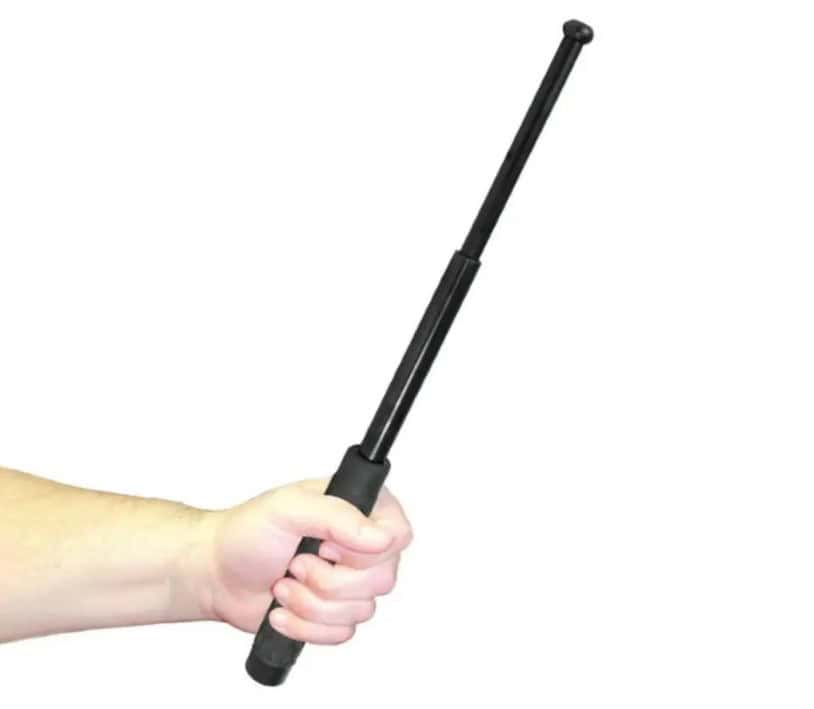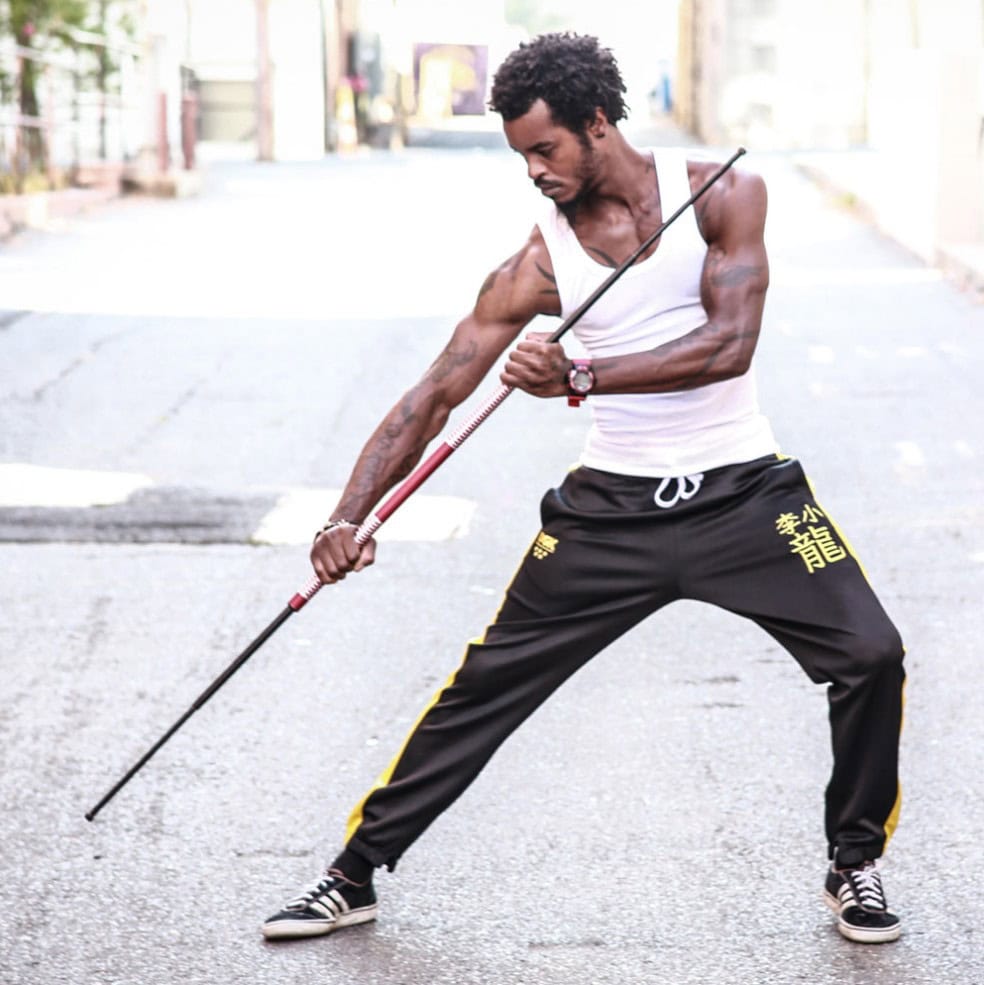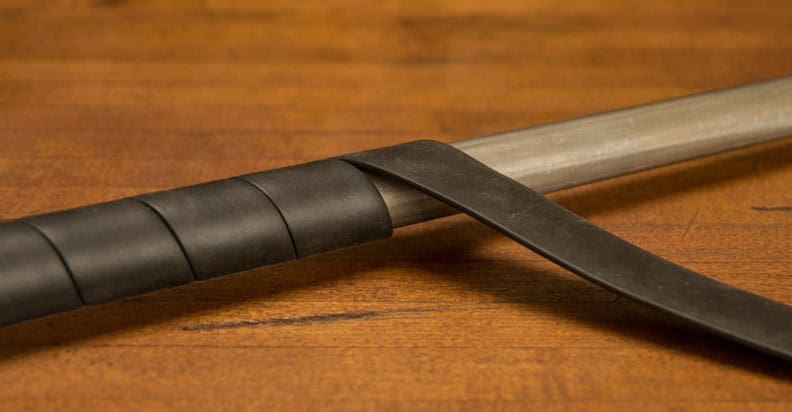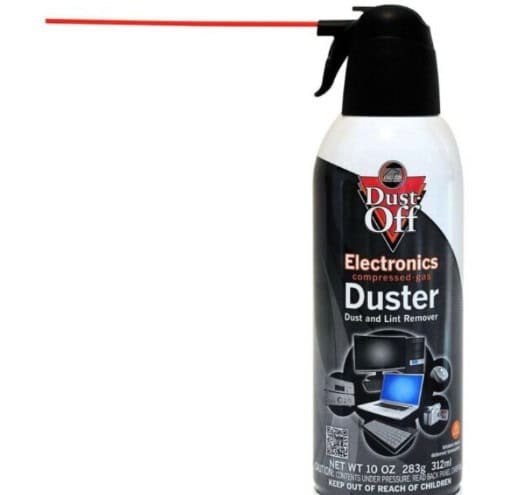The Versatility of Retractable Metal Bo Staffs
TLDR: Retractable bo staffs offer a portable and versatile training tool that combines ease of transport with impressive durability, making them ideal for martial artists and self-defense enthusiasts alike.
You know, I never thought I’d get so excited about a stick, but retractable metal bo staffs are something else! These ingenious weapons have completely changed the game for martial artists like me who are always on the move. Picture this: a full-length bo staff that can shrink down to the size of a large water bottle. It’s like having a secret weapon tucked away in your bag, ready to spring into action at a moment’s notice. I’ve been training with various bo staffs for years, but when I first got my hands on a retractable metal one, it was a total game-changer. The convenience is unreal, and the possibilities? Well, they’re endless.
Mechanism of Retraction
When it comes to retractable metal bo staffs, the magic lies in their ability to shrink down to a fraction of their full size. Trust me, the first time I saw one in action, my jaw hit the floor. There are two main types of retraction mechanisms: spring-loaded systems and telescoping designs. Each has its own quirks and perks, and I’ve had my fair share of fumbles with both.
Spring-loaded systems are like the showoffs of the retractable staff world. They use compressed springs to rapidly extend the staff with a flick of the wrist. It’s all about that satisfying ‘whoosh’ as the staff snaps into place. But here’s the kicker: mastering the deployment takes practice. I once accidentally extended my staff right into my training partner’s foot. Ouch! Pro tip: always point the staff away from people when extending it.
Telescoping designs, on the other hand, are the more laid-back cousins. They use nested segments that slide into each other, kinda like a high-tech version of those old TV antennas. You gotta manually extend each section, which can be a bit of a pain when you’re in a hurry. But they’re generally more reliable and less prone to accidental deployment. I’ve found that a quick twist of each section as you extend it helps lock everything in place securely.
Here’s a breakdown of the pros and cons of each system:
| Mechanism | Pros | Cons |
| Spring-loaded | Quick deployment, Impressive to watch | Can be unpredictable, Requires more maintenance |
| Telescoping | More reliable, Easier to control | Slower to deploy, Can get stuck if not cleaned regularly |
Portability and Storage for Retractable Bo Staffs
Let me tell you, finding the perfect storage solution for a retractable bo staff is like solving a puzzle – and I’ve got some battle-tested tricks up my sleeve. Portability is the name of the game, especially for martial artists who are always on the move. Most retractable metal bo staffs collapse down to around 19 to 24 inches, which is basically the length of a small umbrella.
The real game-changer is the compact design. I learned pretty quickly that not all storage solutions are created equal. Pro tip: always invest in a protective case. I once made the mistake of just tossing my staff in a gym bag, and let me tell you, those scratches were no joke.
Here’s a quick breakdown of storage options I’ve found work like a charm:
| Storage Method | Pros | Cons |
| Padded Carry Case | Maximum protection | Slightly bulky |
| Backpack Sleeve | Ultra-portable | Less protection |
| Wall Mount | Great display option | Not portable |
| Velvet Carry Bag | Looks professional | Minimal protection |
Transportation is where these metal staffs really shine. I’ve taken mine on road trips, to training camps, and even on short flights (though always check local regulations first). The telescoping mechanisms are a total lifesaver. Some models can literally fit in your pocket – we’re talking about a full-length training weapon that shrinks down smaller than a water bottle!
A word of caution: temperature and humidity are your enemies. I once left my staff in a hot car, and metal expands – learned that lesson the hard way. Always store your staff in a cool, dry place. A climate-controlled environment is ideal, but a simple closet or gear bag works just fine.
For martial artists who travel or train in multiple locations, portability is everything. These retractable metal bo staffs are basically the Swiss Army knives of training weapons. Compact, durable, and ready to deploy at a moment’s notice. Whether you’re heading to a class, traveling, or just want to keep your gear compact, a collapsible metal bo staff is your new best friend.
Just remember – a little care goes a long way. Invest in a good case, be mindful of how you store and transport your staff, and it’ll be your trusty training companion for years to come. Trust me, I’ve been around the block with martial arts equipment, and a well-maintained staff is worth its weight in gold.
Pro tip: Always check the retraction mechanism before storing. Some staffs can be tricky to collapse, and you don’t want to be that person struggling to put away their equipment in front of other martial artists. A smooth, practiced motion is key to looking like you know what you’re doing!
Training Applications of Retractable Bo Staffs
First off, the portability factor is a game-changer. I remember lugging around my old wooden staff to every class, feeling like I was carrying a small tree. With a retractable staff, I can now practice anytime, anywhere. I’ve done impromptu training sessions in parks, hotel rooms, and even my office during lunch breaks. It’s like having a full-sized weapon that fits in your backpack!
One of the coolest training applications I’ve discovered is working on quick deployment. There’s something incredibly satisfying about that ‘whoosh’ sound as the staff extends. I’ve turned it into a drill, practicing drawing and extending the staff as quickly as possible. It’s not just fun; it’s practical too. In a self-defense situation, every second counts.
Here’s a quick breakdown of some training applications I’ve found super effective:
- Quick deployment drills
- Confined space techniques
- Transitioning between different lengths
- Combination moves with extension/retraction
- Balance and control exercises
Speaking of balance, that’s where these staffs really shine in training. The weight distribution is different from a traditional wooden staff, which forces you to adapt your techniques. It took me a while to get used to it, but man, once I did, my control improved dramatically. It’s like training with weighted gloves – when you go back to the regular stuff, you feel like a superhero.
One thing I’ve learned the hard way: start slow with spinning techniques. The first time I tried a full-speed spin with my retractable staff, I nearly took out a lamp. The weight distribution can make spins trickier, but with practice, you can achieve some seriously impressive speed.
Here’s a little table I’ve put together comparing training aspects of retractable vs. traditional staffs:
| Aspect | Retractable Staff | Traditional Staff |
| Portability | Excellent | Poor |
| Weight Distribution | Variable | Consistent |
| Technique Adaptation | Required | Not Necessary |
| Quick Deployment | Yes | N/A |
| Durability | Good | Excellent |
One of my favorite training exercises is what I call the “length transition drill.” I practice techniques at full extension, then mid-length, then fully retracted. It’s amazing how much this improves your adaptability and spatial awareness.
Remember, safety first! When I started out, I got a bit overconfident and ended up with a bruised foot. Always make sure you have enough space, and never forget to check that the staff is fully locked before going full force with your techniques.
Retractable Bo Staff Durability and Strength
When it comes to the durability and strength of retractable bo staffs, I’ve got to admit, I had my doubts at first. I mean, a staff that collapses and fits into a backpack? It sounded too good to be true—like one of those gadgets that trades off durability for convenience. But after putting mine through some serious training sessions, I was pleasantly surprised by how tough these things are.
The key to a retractable bo staff’s durability lies in the materials used. Most high-quality models are made from aluminum alloy or stainless steel, both of which are known for their strength and resistance to bending or breaking. Aluminum alloy, especially the 6061-T6 type (which is also used in aircraft), is lightweight but incredibly strong. Stainless steel, on the other hand, is a bit heavier but offers even more durability, especially for those who prefer a heftier weapon. I’ve personally trained with both types, and while I love the lightness of aluminum for speed drills, stainless steel feels like it could survive a nuclear apocalypse.
One thing I learned the hard way is that not all retractable bo staffs are created equal. I once bought a cheaper model online (you know, trying to save a few bucks), and within a week of practice, the locking mechanism started to fail. Mid-spin, the staff collapsed on me—talk about embarrassing! Lesson learned: always invest in a reputable brand that uses high-quality materials and reliable locking systems.
Here’s a quick comparison of common materials used in retractable bo staffs:
| Material | Strength | Weight | Durability |
| Aluminum Alloy (6061-T6) | High | Light | Great for speed training |
| Stainless Steel | Very High | Heavy | Excellent for durability |
| Carbon Fiber | Moderate | Ultra-light | Not as durable under heavy impact |
Another factor that plays into the strength of these staffs is the locking mechanism. There are generally two types: spring-loaded locks and twist-lock mechanisms. Spring-loaded locks are quick and easy to use but can wear out over time if not properly maintained. Twist-lock mechanisms tend to be more reliable in the long run but require a bit more effort to engage and disengage. Personally, I prefer the twist-lock system because it feels more secure during heavy strikes.
Now, let’s talk about wear and tear. Even though retractable bo staffs are built tough, they’re not invincible. The biggest enemy? Dirt and debris getting into the joints where the sections collapse into each other. I’ve found that regular cleaning is essential if you want your staff to last. A simple wipe-down after each session with a dry cloth does wonders, but every now and then, you’ll want to give it a deeper clean with some light oil or lubricant to keep everything moving smoothly.
One mistake I made early on was storing my staff in a humid area (my garage). After a few weeks, I noticed some slight rust forming around the joints—yikes! Since then, I’ve made sure to store my staff in a dry place and occasionally apply an anti-rust spray to keep it in top shape.
In terms of impact resistance, retractable bo staffs can hold their own against traditional wooden staffs. However, they do have their limits. While they’re great for most training applications—like spinning techniques or light sparring—I wouldn’t recommend using them for full-contact combat unless you’ve got one specifically designed for that purpose (and trust me, those tend to be on the pricier side).
Safety Features of Retractable Bo Staffs
First off, let’s talk about the locking mechanism. This is probably the most crucial safety feature of any retractable bo staff. A good locking system ensures that once you’ve extended the staff, it stays extended. I remember my first cheap staff – mid-spin, it collapsed on me! Talk about a wake-up call. Now I always check that the locks are engaged before I start any serious training.
Most quality retractable staffs use either a twist-lock or a spring-loaded locking system. The twist-lock is my personal favorite. It’s simple, reliable, and you can actually feel it click into place. Spring-loaded systems are faster to deploy, but in my experience, they can wear out over time if not properly maintained.
Another key safety feature is the material used for the grip. A good grip is essential for control, and control is essential for safety. Many high-end staffs use textured rubber or foam grips that provide excellent traction, even when your hands get sweaty. I once used a staff with a smooth metal grip during a summer training session – big mistake! It was like trying to hold onto a greased pig.
Here’s a quick rundown of safety features to look for:
- Reliable locking mechanism
- Non-slip grip
- Rounded ends (to prevent accidental punctures)
- Durable construction material
- Weight balanced for control
Speaking of construction material, most retractable bo staffs are made from either aluminum alloy or stainless steel. Both are strong, but aluminum is lighter, which can be safer for beginners or for extended training sessions. Stainless steel is heavier and more durable, but it requires more strength and control to use safely.
One safety feature that’s often overlooked is the end caps. Good quality staffs have rounded or slightly padded end caps. This might not seem important, but trust me, when you accidentally poke yourself (and you will, we all do), you’ll be glad for that extra bit of cushioning.
Here’s a comparison of safety features in different types of retractable bo staffs:
| Feature | Basic Model | Mid-Range | Professional Grade |
| Locking Mechanism | Simple twist-lock | Spring-loaded | Advanced multi-point lock |
| Grip Material | Smooth metal | Textured rubber | High-friction foam |
| End Caps | Basic plastic | Rounded rubber | Shock-absorbing composite |
| Material | Aluminum | Aluminum alloy | Aircraft-grade aluminum or stainless steel |
| Weight Balance | Variable | Good | Excellent |
One thing I’ve learned is that safety isn’t just about the features of the staff – it’s also about how you use it. Always start slow when you’re learning new techniques. I once got a bit too ambitious trying a complex spinning move and nearly took out a lamp (and myself) in the process.
Comparison to Fixed-Length Staffs
Traditional wooden staffs have a consistent weight distribution that you get used to over time. Retractable staffs, on the other hand, can feel a bit top-heavy when extended. It took me a while to adjust my techniques to account for this difference.
Here’s a quick comparison table I’ve put together based on my experience:
| Feature | Fixed-Length Staff | Retractable Staff |
| Portability | Low | High |
| Weight Distribution | Consistent | Can be top-heavy |
| Durability | High (if well-maintained) | Moderate (depends on quality) |
| Maintenance Required | Low | Moderate |
| Versatility in Techniques | Standard | Allows for unique moves |
One thing I’ve noticed is that retractable staffs open up some interesting possibilities for techniques. For example, I’ve developed a move where I retract the staff mid-spin and then quickly extend it for a surprise strike. You just can’t do that with a fixed-length staff!
However, I’ve got to be honest – there’s something about the feel of a solid wooden staff that’s hard to replicate. The way it flexes slightly on impact, the sound it makes when you’re practicing forms… it’s part of the traditional martial arts experience that I sometimes miss.
Maintenance is another factor to consider. With my old wooden staff, I just needed to oil it occasionally. Retractable staffs require a bit more care. You’ve got to keep the mechanisms clean and lubricated, and be careful not to get sand or dirt in the joints. I learned that lesson the hard way after a beach training session!
When it comes to durability, it really depends on the quality of the staff. A good hardwood bo can last a lifetime if you take care of it. Retractable staffs, even high-quality ones, have more potential points of failure due to their complex mechanisms. That said, I’ve had my current retractable staff for years and it’s still going strong.
One unexpected benefit I’ve found with retractable staffs is that they’re great for practicing precision. Because they’re often made of metal, they don’t have the give that wooden staffs do. This means you’ve got to be spot-on with your strikes, or you’ll feel it in your hands!
In terms of cost, retractable staffs tend to be pricier than their fixed-length counterparts. But when you factor in the convenience and versatility, I think it’s worth the investment.
At the end of the day, both types of staffs have their place. I still keep a traditional wooden staff around for certain forms and techniques, but my retractable staff has become my go-to for everyday training. It’s all about finding what works best for your style and needs.
Maintenance Tips for Retractable Mechanisms
First off, cleanliness is key. You wouldn’t believe how much gunk can build up in those tiny crevices! After each training session, I make it a habit to wipe down my staff with a dry cloth. It’s a simple step, but it goes a long way in preventing dirt and sweat from gumming up the works.
Now, here’s a pro tip I wish someone had told me earlier: use compressed air to blow out any debris from the locking mechanisms. I picked up this trick after my staff started sticking mid-extension. Talk about embarrassing! A quick blast of air every couple of weeks keeps everything moving smoothly.
Lubrication is another biggie. But here’s the catch – you don’t want to overdo it. I made that mistake once and ended up with a slippery mess. A tiny drop of silicone-based lubricant on the moving parts is all you need. Just make sure to wipe off any excess, or you’ll be fumbling with your staff like a newbie.
Here’s a quick rundown of my maintenance routine:
- Wipe down after each use
- Blow out debris with compressed air bi-weekly
- Apply light lubrication monthly
- Inspect locking mechanisms before each training session
Speaking of locking mechanisms, keep an eye out for any signs of wear. If you notice any looseness or if the staff doesn’t lock securely, it’s time for some TLC. I’ve found that tightening any visible screws can often solve minor issues.
One thing I’ve learned the hard way is the importance of proper storage. Leaving your retractable staff fully extended for long periods can wear out the springs. I always make sure to collapse mine before putting it away. And here’s a little secret – I store mine vertically. It helps prevent any uneven pressure on the mechanisms.
Temperature is another factor to consider. Extreme heat or cold can affect the metal and the internal components. I once left my staff in a hot car, and let me tell you, it was not happy about it. Now, I always make sure to store it in a cool, dry place.
Here’s a comparison of maintenance needs for different types of retractable mechanisms:
| Mechanism Type | Cleaning Frequency | Lubrication Needs | Common Issues |
| Spring-loaded | Weekly | Monthly | Spring fatigue |
| Twist-lock | Bi-weekly | Bi-monthly | Thread wear |
| Button-lock | Weekly | Monthly | Button sticking |
Remember, prevention is better than cure. Regular maintenance might seem like a chore, but it’s way better than dealing with a malfunctioning staff in the middle of training. Trust me, I’ve been there, and it’s not fun!
Lastly, don’t be afraid to give your staff a thorough inspection every few months. Look for any signs of metal fatigue, especially around the joints. If you spot any cracks or severe wear, it might be time to retire your trusty staff and invest in a new one.
Maintaining your retractable bo staff might take a bit of effort, but it’s worth it. A well-maintained staff is not just more reliable; it’s safer too. And let’s face it, there’s something satisfying about working with a smooth, well-oiled piece of equipment.
Best Places to Find a Retractable Metal Bo Staff for Sale
If you’re searching for a retractable metal bo staff, there are plenty of options available online and in specialty martial arts stores. Look for retailers that cater to martial artists, cosplayers, or weapon enthusiasts, offering durable, high-quality designs. Whether you need one for training, performance, or display, you’re sure to find a bo staff that suits your needs and style.
Kombativ

What I Like:
- Innovative Design: This spring-loaded bo staff expands seamlessly from 30 inches to a full 70 inches with the push of a button, combining compact portability with impressive reach.
- High-Quality Materials: Built in the USA, it features a polished stainless steel center and heat-treated black steel arms for unmatched durability and sleekness.
- User-Friendly Functionality: At 4.5 pounds, it’s perfectly balanced for precise movement, easy to collapse, and can be upgraded with a black vinyl case for convenient storage and transport.
Karate Mart

What I Like:
- Innovative Extendable Design: The bo staff uses telescoping steel shafts with compression fittings, quickly extending with a wrist flick and locking securely for powerful strikes.
- Sleek and Durable Construction: Featuring a lightweight aluminum handle with a metallic blue anodized finish, it offers a diamond grip for enhanced control during practice and demonstrations.
- Compact and Versatile: Available in two lengths, it collapses to a portable size and locks securely, making it easy to transport and store without compromising performance.
Final Thoughts
Looking back, I can’t imagine my training without my trusty retractable metal bo staff. It’s become such an integral part of my routine that I sometimes forget how revolutionary it really is. Sure, there are purists out there who swear by traditional wooden staffs, and I get it – there’s something to be said for tradition. But for me, the versatility, durability, and sheer coolness factor of a retractable metal bo staff are unbeatable. Whether you’re a seasoned martial artist or just starting out, I’d say give one of these bad boys a try.




